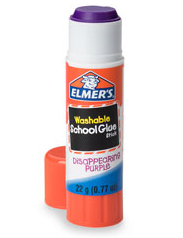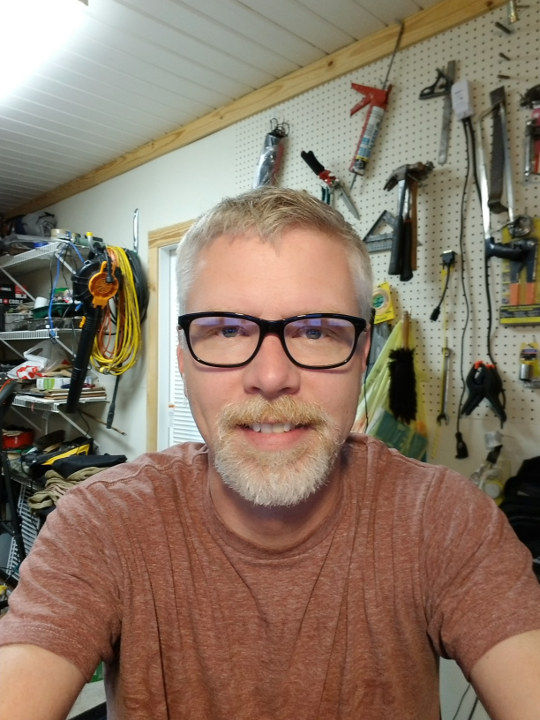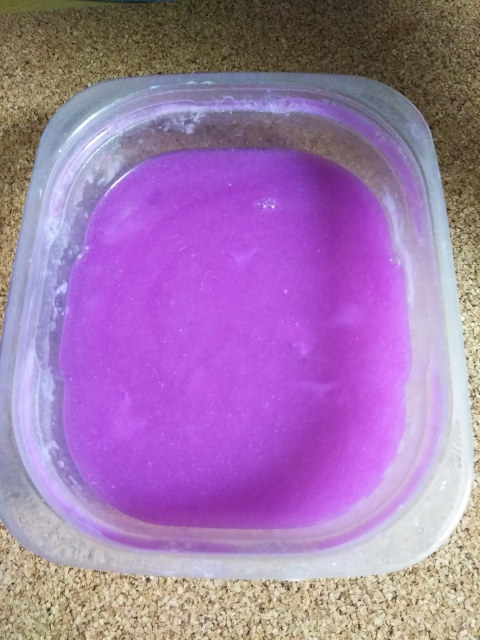Karl here…just want to do a little post about bed adhesion and what I have been doing for the past month. What spurred this is I saw a ton of videos on Magigoo a while back. It is a product that you wipe on your glass/mirror bed and 3D prints stick very well to it and once the bed cools the part pops off very easily. It is quite expensive and it got me to think about alternatives. I have used glue stick almost exclusively while printing on glass/mirror but a lot of time the prints stick too well and prints can get marred up removing with a tool.
 It is quite easy to make. 1 cup water and 1 large 22g Elmers glue stick. I put both in water and let sit thinking it would dissolve on its own. After several hours I got impatient and put it in the microwave and heated it.(45 seconds I think). That did the trick and was only left with a few big clumps that I broke apart with my fingers to finish the dissolving.
It is quite easy to make. 1 cup water and 1 large 22g Elmers glue stick. I put both in water and let sit thinking it would dissolve on its own. After several hours I got impatient and put it in the microwave and heated it.(45 seconds I think). That did the trick and was only left with a few big clumps that I broke apart with my fingers to finish the dissolving.
To apply I just dip a paper towel in the solution and wipe on the bed. It leaves an extremely light layer of glue on the bed that PLA sticks very well to. When the bed cools the parts have very light adhesion to the bed. If the bed is hot it takes some force to get off.
I waited a month before posting to make sure the solution did not go rancid. It has no odor so far except smelling like the glue stick. I have tried to think of a printable applicator with a dense sponge that is more elegant than a paper towel but have not come up with anything. Anything that I come up with I believe would get clogged after time. Hope this helps and happy printing.

Karl is a technology enthusiast that contributes reviews of TV boxes, 3D printers, and other gadgets for makers.
Support CNX Software! Donate via cryptocurrencies, become a Patron on Patreon, or purchase goods on Amazon or Aliexpress. We also use affiliate links in articles to earn commissions if you make a purchase after clicking on those links.






Hi Karl,
Could you precise water quantity used because “1 cup of water” does not mean anything for me…
Thank you
Assuming you’re not intentionally trolling….
1 cup == 0.23658824 L
I was not aware it was an official measure. It appears to be mostly used in the US according to Wikipedia.
“Cup” can be confusing, as it may also refer to an actual cup whose size may vary, although in that context it would be clear to people used to deal in “cups” as per the US meaning.
Thank you @cnxsoft: It is precisely what I tried to expose.
In my kitchen I have diversity of cups and glasses of all sort with different capacities.
I encounter same problem with approximative recipes.
So, I am not trolling I just ask for precise information.
@willmore
are you so sure Karl is refering to your suggestion or he was talking about a random cup taken from its kitchen?
We must use terms that minimize risks of confusion otherwise it is unusable information.
Sorry…236 ml.
No problem Karl.
Thank you for your precision.
I learned something today. I did not know cup is a unit of volume.
Anyway, thank you to share with us your trick…
Optionally, you could use a PrintBite bed and skip all the crazy adhesion enhancing issues as well as the after print cleanup problems.
If you’re printing on glass with glue stick and your prints aren’t popping off it usually means your print bed isn’t warm enough, at least with PLA/ABS. The idea is to keep it at or slightly above the glass transition temp so that when it cools the action of it shrinking, ~2% for PLA, ~8% for ABS, that last bit pops it free. I don’t think PETG shrinks enough to automatically pop free. Keep in mind that the glass also acts as an insulator, the temperature you set the heat bed to is likely to result in glass that is several degrees cooler.
Wood glue diluted with water also works pretty good, and pop’s off after cooling